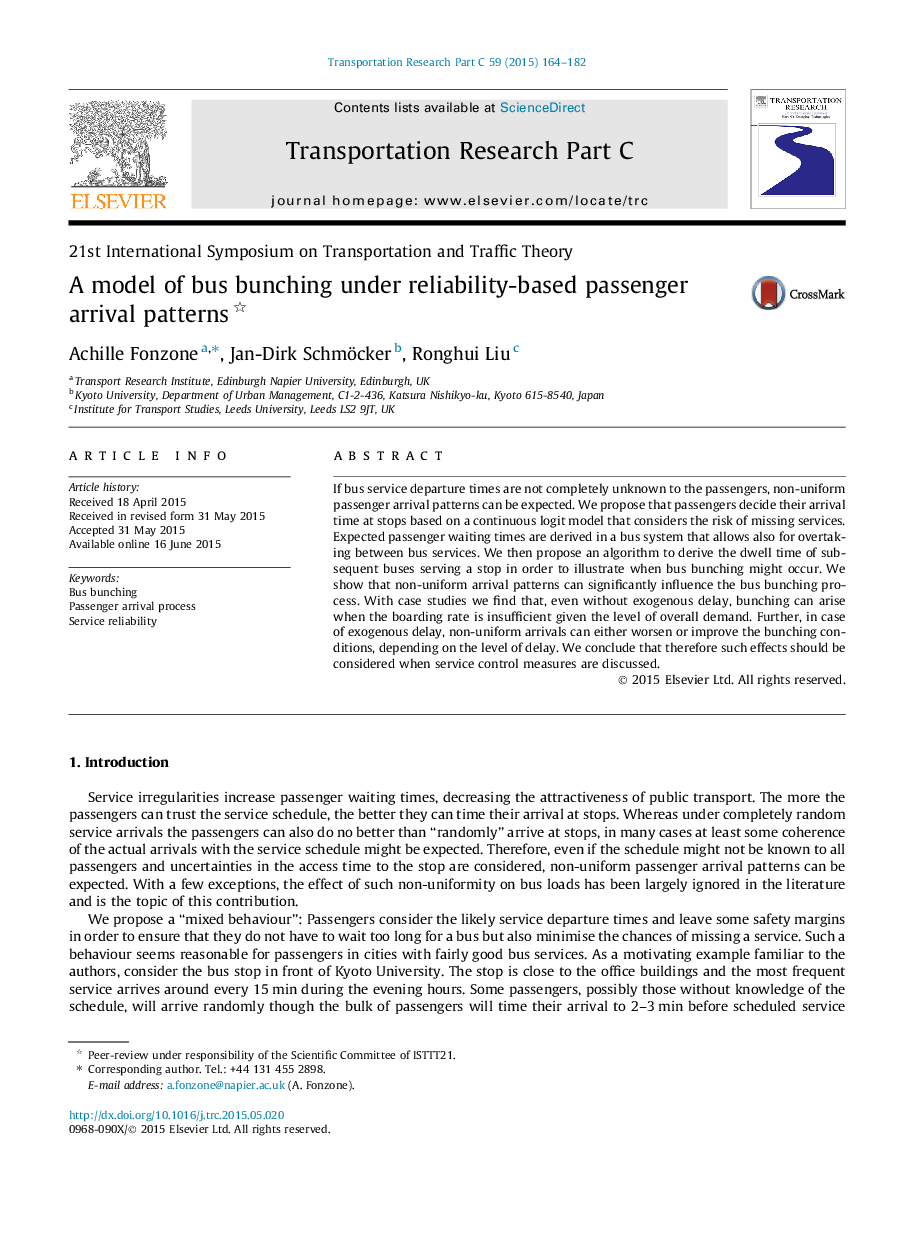| Article ID | Journal | Published Year | Pages | File Type |
|---|---|---|---|---|
| 524863 | Transportation Research Part C: Emerging Technologies | 2015 | 19 Pages |
•We model bus bunching considering the response of passengers to system reliability.•Passenger arrival at stops takes into account that overtaking between buses may occur.•We analyse the system performance under different demand and supply scenarios.•Bunching can arise without exogenous delays because of non-uniform passenger arrival.•Operators should strive to assess correctly and to smoothen the demand.
If bus service departure times are not completely unknown to the passengers, non-uniform passenger arrival patterns can be expected. We propose that passengers decide their arrival time at stops based on a continuous logit model that considers the risk of missing services. Expected passenger waiting times are derived in a bus system that allows also for overtaking between bus services. We then propose an algorithm to derive the dwell time of subsequent buses serving a stop in order to illustrate when bus bunching might occur. We show that non-uniform arrival patterns can significantly influence the bus bunching process. With case studies we find that, even without exogenous delay, bunching can arise when the boarding rate is insufficient given the level of overall demand. Further, in case of exogenous delay, non-uniform arrivals can either worsen or improve the bunching conditions, depending on the level of delay. We conclude that therefore such effects should be considered when service control measures are discussed.
